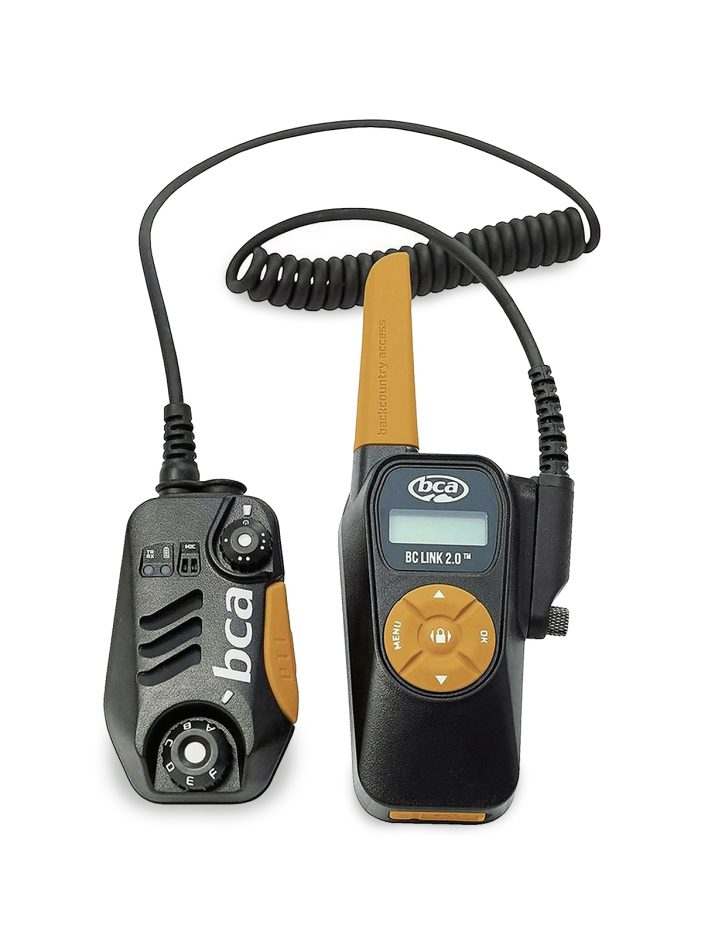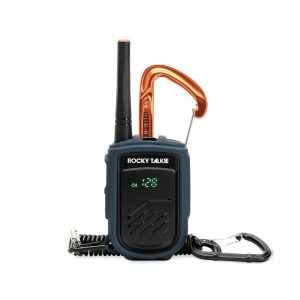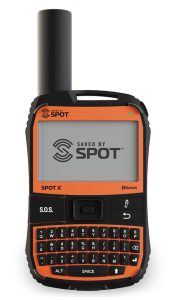Backcountry Access Link 2.0

“The biggest vote of confidence for these is that all my ski partners carry them,” said our tester, who’s owned his set for years, in part because the Link 2.0 has long been the most durable, reliable option, with a Backcountry Access-claimed usable range of 6 miles. “I don’t snowmobile much so I’m never that far from partners,” he said, “but I’ve never had a problem with reception, no matter the terrain.” Battery life spans many tours, according to this tester, and the Smart Mic with preset channels makes switching in the field smooth. The mic-and-radio combo is bulky and the price tag steeper than other options, but the Link 2.0 has always come through for our tester, whether in a rescue or discussing which line to hit with friends.
Where to buy
Garmin inReach Mini 2

“Simple and effective,” our tester said of the inReach Mini 2. Four buttons navigate the screen, which offers messaging, tracking, navigation and weather forecasts. The fifth button, labeled SOS, directly messages the Garmin Response team, who notify the appropriate emergency responders. When connected with the Garmin Messenger App, these functions can all be done from your phone. However, the device doesn’t work right out of the box. Two subscription plans are required—one to activate satellite communication ($15/month for a 30-day commitment, or $12/month with annual commitment) and a second for your messaging plan (personal plans range from $12/month for a consumer safety plan with annual commitment to $65/month for a consumer expedition plan with a 30-day commitment). “Hefty, but worthwhile investment,” our tester concluded after using the Mini 2 while delayed by a storm in the Andes.
Where to buy
Rocky Talkie Mountain Radio

Smaller is better, at least in the case of the Mountain Radio. “Every good radio I’ve carried for skiing is super bulky,” our tester said. “This one is cute and hangs right off my backpack strap.” Strong performance complements the trim profile, with our tester finding clarity along a ridge on a long-distance mountain bike trip and around convoluted alpine terrain. “I wish it were a little louder,” he said, though he liked the several days of battery life and being able to buy an extra battery ($28) for extended overnights. With 128 channel combinations, he found having a private conversation easy. The Mountain Radio isn’t submersible, just splash- and snowproof, but, as our tester put it, “I’ll take it off my pack before I go pond skimming.”
Where to buy
Spot Spot X

Are all emergency satellite communications made equal? No, our tester says. “After some hiccups in the setup, the Spot X was intuitive and straightforward,” he said. With route tracking, preloaded messages, automatic check-ins, SOS capabilities and the ability to type out original missives, the Spot X kept him in touch on long bike rides and backcountry overnights. “The full keyboard is nice for typing and navigating, though a device this small is always somewhat difficult to use,” he said. However, he paired the Spot X, which requires a subscription plan (as little as $12/month), with the corresponding smartphone app, which allowed him to add contacts and write messages from his phone. In conclusion, he said, “Linked with the app, this is the most user-friendly comms device I’ve ever used.”
Where to buy
These reviews were originally published in Issue No. 155. To read more, pick up a copy, or subscribe to read our gear reviews earlier when they are published in print.
*Affiliate link disclaimer:
At Backcountry Magazine, we are committed to providing you with honest and informative gear coverage. To support our work and continue delivering quality content, we are including affiliate links in our reviews. Partnerships with retailers are separate from coverage, ensuring that our reviews remain unbiased. These links help us earn a small commission if you make a purchase through them, at no additional cost to you.














Related posts: